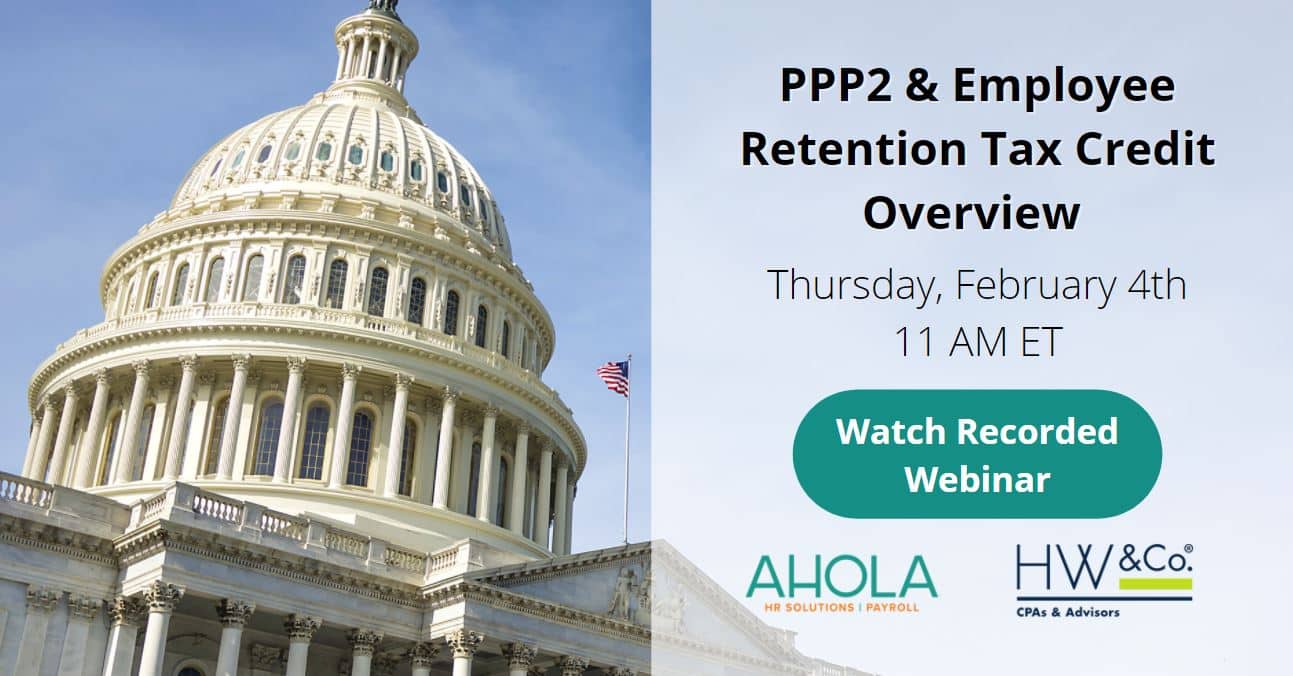Retaining Talent in the Post-Pandemic Workplace
Who could have predicted the disruption and change 2020 brought to the way we work? Now that we are starting to look ahead, past the loss and the lockdowns, it is time to plan for what is next.
One of the many considerations that needs to be addressed is retaining top talent. This is not a new issue, but employee retention looks different than it did in the pre-pandemic world. The perks and benefits talent looks for are not the same. Neither are the perks and benefits companies offer.
According to a recent Stanford University study, 42% of the workforce is currently working from home, accounting for more than two-thirds of economic activity. Meanwhile, a Pew Research study reported that nearly 90% of people who have been able to work from home during the pandemic never want to go back to the office full time. A PwC survey reported that the role of the office will be different. While most executives still are working out the details, only 13% of executives are ready to stay fully remote.
What began as a crisis response turned into a permanent shift. Virtual interactions gave company leaders rare insight into their employees’ home lives. Companies recognized they needed to consider the whole person, not just the part that appeared at the office each day.
As a result, companies offered new perk-and-benefit packages that reflected the long-term nature of these changes. Some trends that are likely to be long term are emerging, including:
-
Open and transparent communication. The pandemic highlighted the need for open and transparent communications from company leaders. This will not change, whether companies stay remote or return to the workplace. In many ways, this is the foundation of all company wellness programs because it is the place leaders gain employee buy-in.
-
Health and wellness. The pandemic has taken a toll on everyone: stress from isolation, fear of getting sick, loss of family or friends, being in close quarters for long periods of time, etc. Companies realized this was a problem early on, and they began addressing it. With traditional stress releases out of reach, the importance of self-care has become a pillar of wellness programs. Companies bring in speakers and present classes about topics from sleep and nutrition to physical activity to mindfulness. Some companies provide stipends for child care or the purchase of exercise equipment or classes.
-
Employee engagement. Maintaining company culture is vital. The pandemic disrupted the fiber of daily lives. The phrases “work wife” and “work husband” have real meaning, and those relationships changed in a blink. Recreating those and other workplace norms in a virtual world is challenging. Technology helped bridge the divide on the work side, but it was up to the company’s creativity and resolve to recreate a healthy team environment. Companies rose to the challenge by doing things like delivering food for meetings, holding virtual wine tastings and arranging scavenger hunts and other contests. These will continue, but companies will have to be able to scale them to appeal to in-office and remote staff.
-
Access to learning. Learning and growing is high on the list of what employees want. Giving them access to formal and informal learning platforms is key. Learning and training can be costly, and companies are dealing with this by allowing universal access to some learning and limiting access to the rest.
-
Financial wellness. The pandemic caused financial worries. Companies have responded in various ways, from repaying student loans to offering budgeting workshops. This aspect of employee wellness should not be overlooked.
-
Salary cuts for work-from-home staff. From not paying for commuting to lower dry-cleaning costs, many people who work from home have lowered their expenses. Some people moved from expensive cities to lower-cost areas. Companies, particularly in the tech sector, are starting to realize this and are asking some employees to take what is essentially a cost-of-living pay cut.
We will have to wait and see how this plays out and how it affects recruitment and retention.
It remains to be seen how these trends will evolve as the pandemic winds down and people start returning to the workplace. What is clear is that companies need to start planning now. Much needs to be considered in the planning, including how to manage remote staff who feel they are on a different career track than are in-house staff. Budget is another important factor. For example, companies need to decide whether they want to go back to doing in-person trade shows or attending in-person conferences.
The best way for companies to prepare for a post-pandemic workplace is by creating and evaluating different scenarios, each with the same goal: retaining top talent. Businesses went into remote environments very quickly. Emerging from them will be much more difficult.
Looking for more HR trending topics and news? Subscribe to our blog.






Reply a Comment